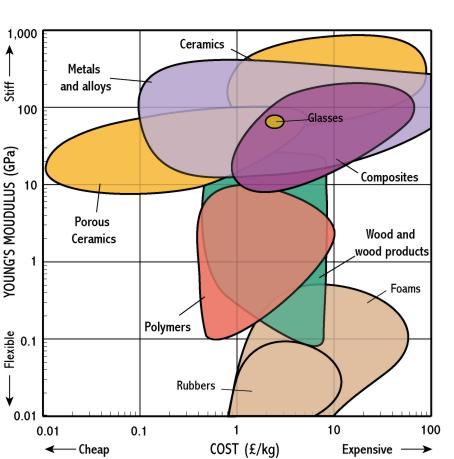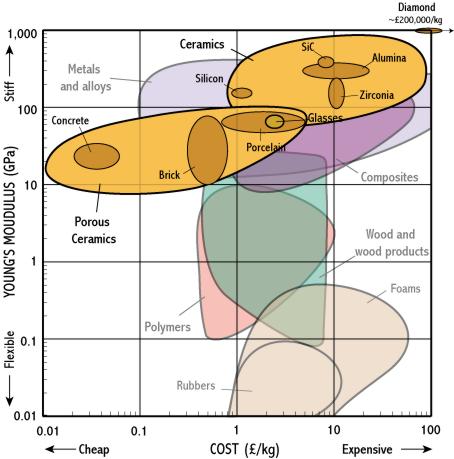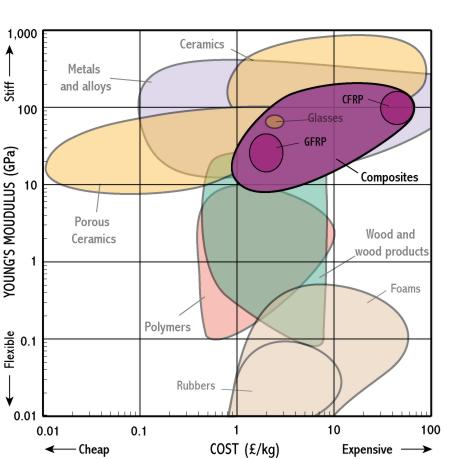Young's Modulus - Cost
Class level

Metals and alloys

Ceramics

Polymers

Wood and wood products

Composites

General Information
- Young's modulus measures stiffness and is a material constant, i.e. it is the same whatever the size of the test-piece.
- Many applications require stiff materials, e.g. roof beams, bicycle frames - these materials lie at the top of the chart
- Many applications require low cost materials, e.g. packaging foams - these materials lie to the left of the chart.
- Cheap stiff materials lie towards the top left of the chart – mostly metals and ceramics.
Physical Insights
- Polymers don't seem like a good choice for stiff, cheap products - but they can be reinforced by incorporating stiffeners into the design (for instance look inside a plug).
- Diamond is the stiffest material because of its full covalent bonding - but its price means it is not used for engineering applications.
- Polyethylene has a wide range for Young’s modulus because the ‘bubble’ include both LDPE and HDPE.
Example Uses
- Concrete is cheap and stiff - ideal for structures.
- Cast iron is ideal for a machine-tool bed as it provides high stiffness at low cost.
Simple Questions
- What applications might require low stiffness materials?
- Paper has the same Young’s modulus as oak – so why do people think it’s not as stiff?
- Since wood is not that cheap, why was it used so much until recently?
Further Questions
- Since composites don’t appear to provide stiffness at low cost - why are they used?
- Why is lead used as ‘flashing’ to keep water out of buildings (e.g. roof/chimney joins).
- What is different about urea formaldehyde compared to the other polymers on the chart that makes it the stiffest?
- Why are ceramics, such as silicon carbide, used for machine tool tips?
- Foams are stiffer than rubbers (why?), but not as strong as rubbers (why?). What are the implications for suitable applications?
There are 2 separate populations for this class to improve clarity. Move the mouse over different parts of the class name to reveal each one.
Select chart:





